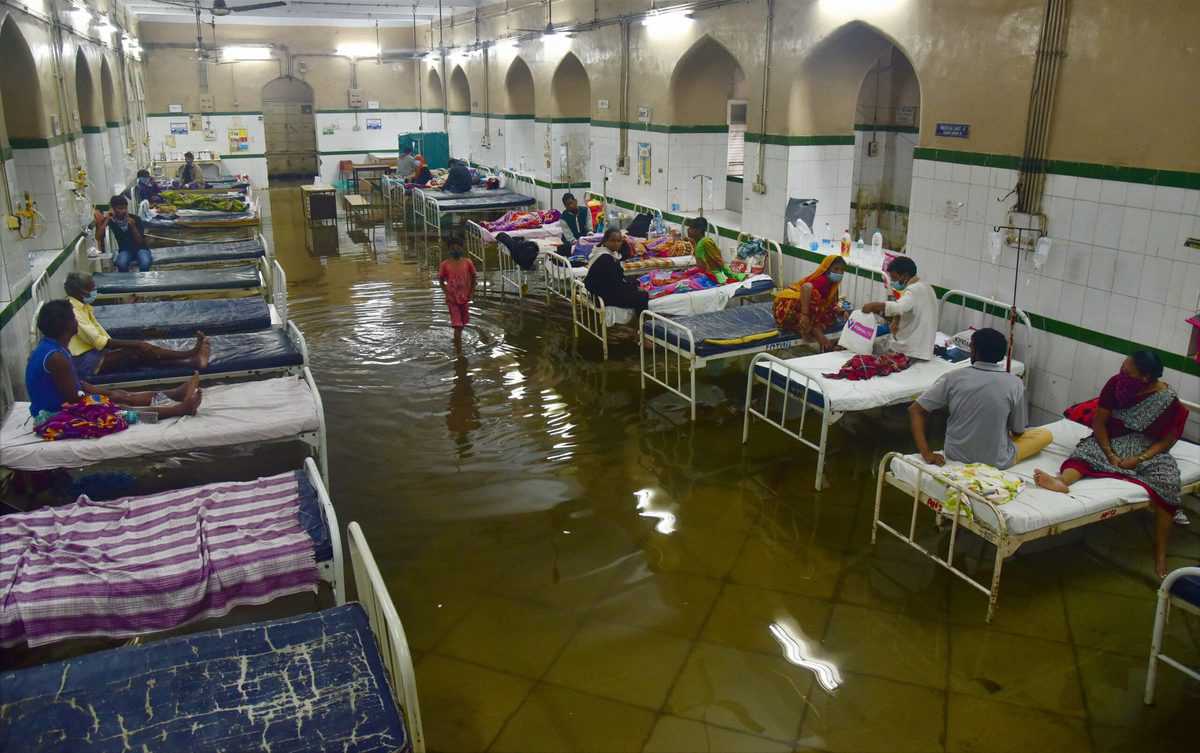Yunus Y. Lasania
Hyderabad: After going for a centralized approach right from the beginning of coronavirus (COVID-19) pandemic, the Telangana government has now switched gears and taken up decentralization. Apart from finally starting the new 1500-bed Telangana Institute of Medical Services (TIMS), treatment facilities have been established at district level government hospitals as well.
While the new measures are welcome, the fact that numbers continue to rise unabated and government hospitals reeling under severe infrastructure crunch, it has become clear that the earlier approach of the State government was a failure. On 17 July (Friday), Telangana reported 1,478 new COVID-19 cases, taking the state’s total count to 42,496.
Over the past few weeks, the state has been consistently reporting anything between 1200 to about 1,900-odd cases per day, with most of the cases being detected in Hyderabad. The only saving grace is the fact that the patient discharge rate in the state stands at 68%, as 28,705 of the total patients have recovered (till Friday). As of now, there are 13,389 active cases in the state.
While the state’s health department began operations at the new Telangana Institute for Medical Sciences (TIMS) earlier this week, untoward incidents were also witnessed at major state-run hospitals, which have drawn public ire. The latest fiasco being at the Osmania General Hospital (OGH), where the emergency ward on the ground floor of the main building was flooded with drain water after a heavy downpour on 15 July.
Images and videos of the water-logged emergency ward went viral on social media sites like Facebook and Twitter, and drew a lot of flak from angry citizens. Doctors at the OGH alleged that the hospital’s issues were compounded this time during the pandemic due to a shortage of oxygen cylinders as well. Moreover, they also claimed that the number of deaths in the hospital is being underreported by the state government.
Similarly, at Gandhi Hospital, which was turned into the nodal or main COVID-19 treatment centre, has also been facing numerous issues. Outsourced nurses at the state-run hospital went on protest on 11 July demanding higher pay, hindering services. Prior to that, junior doctors (house surgeons or MBBS and post-graduate interns) went on a strike in June after one of their colleagues was assaulted by attendants of a patient.
“Nothing much has changed after the protest. The only change that happened was that asymptomatic COVID-19 patients were not being admitted and sent for home-isolation. However, compared to Osmania General Hospital sanitation is better here. But the state government needs to decentralize COVID-19 treatment fully, and resume other departmental work or else students will suffer,” said a medical intern from Gandhi Hospital, who did not want to be named.
In the state government’s media bulletin on 17 July, about 40-odd government hospitals were also listed as ‘dedicated’ Covid treatment centres, apart from those in the GHMC area. An official from the state’s Health Department said that treatment has begun in the district hospitals and added that that Gandhi Hospital will continue to be the nodal treatment centre while the TIMS will help in easing the pressure off state and private hospitals.
“TIMS has facilities that are comparable to the corporate hospitals,” he mentioned. When asked about the alleged underreporting of deaths at OGH, the official said, “When a death occurs, the family of the deceased has to be informed and police officials verify all details. Whether a deceased person is positive or negative for COVID-19, deaths cannot be hidden.”
In Telangana, as of 17 July, 403 people died after suffering from covid-19.
The writer is a Hyderabad-based journalist, who has previously worked for The New Indian Express, The Hindu and Mint.

